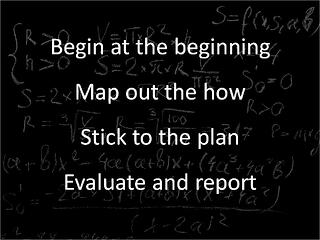 Part 1: Setting Your Program Up for Success
Part 1: Setting Your Program Up for Success
I think our staff members roll their eyes every time they hear me start talking about gathering data from our programs. That might be because I talk about it a lot; it might also be because I’m a little bit of a geek about data. Regardless, they can eye-roll all they want, because when the data gathering and program evaluation is done right, well, it’s a beautiful thing!
Let me explain by using an example from a program that recently wrapped up at one of our senior living client locations. “The Wellness Challenge” has been offered for two years at the community. It’s a good wellness survey type of program that encourages residents to dig into all dimensions of wellness. There are several positive and important elements to The Wellness Challenge:
- It’s a team challenge, so there’s potential for socialization built into the fabric of the program.
- The program is open to residents and employees, so there is a very real buzz at the community, with individuals across the campus engaged in the challenge.
- It capitalizes on the healthy resolution wave that follows the indulgence that is the end-of-the-year holiday time.
- The challenge runs that perfect, sweet-spot length of seven weeks. (We find that most programs of this type are ideally suited to run somewhere between six to eight weeks.)
Now, to be fair, this program was not the brainchild of the current NIFS manager, Reggie. However, he was able to take the original offering from his predecessor, which involved no evaluation strategy, and transform it so that we have both a rich offering for the client, and actionable data that will inform future offerings of both this program and others like it.
What, you ask, is actionable data? Good question! In this two-part blog, we’ll look at four tips for getting the data you want from your wellness program. Part 1 focuses on the before-you-launch-the-program elements (tips #1 and #2). Part 2 will focus on during-the-program and post-program components (tips #3 and #4).
#1: Begin at the Beginning
The whole evaluation and data thing starts by being strategic with the program on the front end. That’s right; we are moving away from running fun programs just to run them (shocking, I know). The staff members actually set program goals before they run the program and then they make sure that the program they’re offering is set up in a way to allow for evaluation of those goals.
- You can’t assess your progress on the goals if they aren’t actually measureable. This sounds intuitive, but people miss the boat on it all the time. Establish goals that are S.M.A.R.T. For more on this concept, check out this blog.
- Create goals that tie back to your overall program goals. For example, if you’re trying to increase visits to your group exercise classes, establish a goal to increase overall class attendance, or maybe focus on how many new people you can get into class with this program. (If you’re lacking focus for your overall wellness program, you probably should start there before you dig too deeply into meaningless goals for programs that don’t connect back to a larger strategy.)
- Keep the list fairly short. This isn’t a research study with all kinds of grant money and data heads behind it. Stick to what you know, and keep the goals manageable in terms of volume; two to three goals per program has worked for us.
- Before you get too far ahead of yourself with lofty, complicated goals that make you sound really smart, you also need to be sure you have the tools to measure the goals. In truth, most of our staff are operating with fairly traditional supports. We use a lot of spreadsheets (though not infinitely complex ones), and in some cases we have software that helps with visit reporting, etc.
#2: Map Out the “How”
You’ve established these two to three program goals. They are succinct; they tie back to your overall wellness program focus; they are written on a scale you can support. Great job! Now it’s time to map out your plan to actually achieve those goals.
No, it’s not enough to outline the goals and then just run the program. That’s like pulling up to the shooting range and saying, “Ready…Fire!” Forgetting to aim means you will most likely miss your target―unless you are extremely lucky.
For example, if you set a goal to increase group fitness class attendance by 15% for the duration of the program, you need to outline the steps you will take to achieve that goal. In the case of The Wellness Challenge, Reggie built the program so that participation in group classes was weighted more heavily than some other activities, and he gave more points for participating in cardiovascular exercise (which, he emphasized, could be achieved by taking classes). In short, he incentivized what he was trying to drive people to do. (Genius, I know!)
You won’t want to miss part 2 of this blog, where we look into how to run the program and what to do when it’s over.


